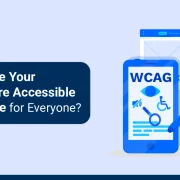A leading K-12 publisher aimed to create accessible eBooks to ensure an inclusive learning experience for all students, including those with visual impairments. The challenge was to provide meaningful alt text descriptions for images, graphs, and charts, making digital content more engaging and accessible.
There are over 2.2 billion visually impaired people around the globe. A lot of these people use assistive technology such as screen readers to access the internet. While the screen readers can easily decipher the text content, it is difficult to comprehend images on the screen. Alternative text or Alt-text is used to describe the images on a website. This is an important aspect of web accessibility. Having an alternative text helps visually impaired users to better understand the nature or contents of an image.
Challenge
- Making digital textbooks fully compliant with accessibility standards such as WCAG and ADA.
- Providing clear and informative alt text for complex visual elements.
- Ensuring seamless navigation for students using screen readers.
Solution
Hurix Digital leveraged its expertise in digital accessibility to develop accessible eBooks that adhered to global accessibility guidelines. The solution included:
- Comprehensive alt text descriptions for images, ensuring students could grasp visual content through text-to-speech tools.
- Semantic structuring of eBooks for smooth screen reader navigation.
- Multi-format compatibility, allowing content to be accessed across various devices and learning management systems.
Results
By implementing these solutions, the K-12 publisher achieved:
- 100% compliance with WCAG and ADA standards, promoting inclusivity.
- Improved engagement for visually impaired learners through structured, text-based image descriptions.
- Seamless integration with assistive technologies, making learning more accessible.
Hurix Digital’s commitment to digital inclusivity helped the publisher deliver high-quality, accessible learning materials.
Learn more about our Digital Accessibility Solutions to make your content more inclusive.
For additional accessibility guidelines, visit W3C Web Accessibility Initiative.




